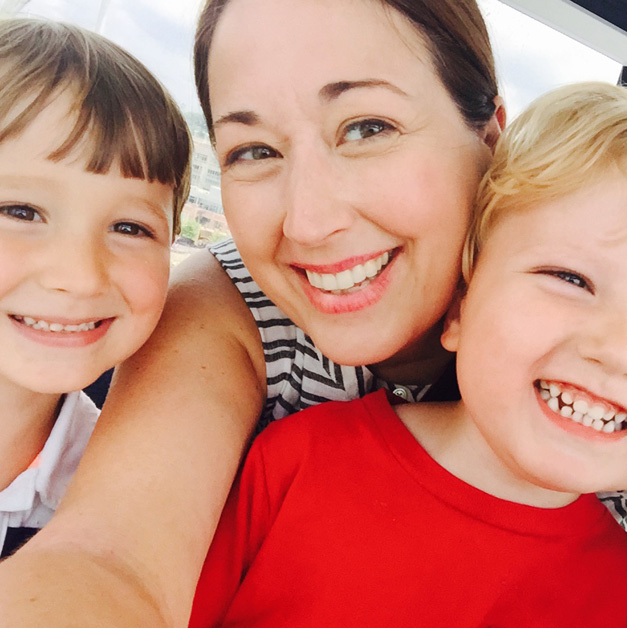Ever notice a child’s speech pattern that sounds, for lack of better terms, off? If not, you may notice this nuance October 31st, Halloween. The all so familiar Halloween jingle contains two, very tricky phonemes: /r/ and /l/. A phoneme is defined as a unit of sound that distinguishes one word from another. The phonemes /r/ and /l/ are called- liquids. Liquids are made when the tongue produces a partial closure in the mouth, resulting in a resonant, vowel-like consonant. In fact, liquids can even act as the sound carrier in a word, such as in the word, battle.
How important are these liquids in our speech pattern? Research states that seven consonants /n,t,s,r,d,m,z/ account for over half of all the consonant occurrences in our language (Shriburg and Kwiatkowski, 1983). The liquid /l/ also occurs very frequently in connected speech; it is ranked the 9th most frequent phoneme in the English language (Shriburg and Kwiatkowski, 1983). As one can see, these two liquids can affect intelligibility greatly if they are not mastered.
Speech mechanics involve complex motor sequences where timing and placement is critical for clear articulation of phonemes. Most children move through developmentally appropriate misarticulations when acquiring speech (See chart). Misarticulations can take many forms: substitutions – switching one phoneme for another (child says gog for dog), omissions – simply omitting a phoneme from word (oran for orange), and distortions – articulating a sound that is similar to the targeted phoneme (fis for fish), and additions – adding a sound (bulack for black).
The phoneme /r/ tends a nightmare for speech pathologists. Why? First off, /r/ makes very different sounds depending on where it is located in a word. For example, take the /r/ in robot versus the /r/ in court verses the /r/ in butter. In the therapy setting, /r/ is often broken down into Prevocalic /r/ and Vocalic /r/.
Secondly, the articulators for /r/ are difficult to visualize when modeling productions. Unlike /f/ which is clearly visible to the discerning eye, the articulators for /r/ are hidden in the oral cavity and complicated to explain to young children. Moreover, /r/ can be made using two very different tongue placements: retroflex position (tongue curled) and bunched-back position (tongue humped). Many speakers use both positions depending on the location of /r/ in the word or phrase; in connected speech, efficiency trumps.
Luckily, the other liquid phoneme /l/, although difficult, is a bit easier to correct. The phoneme /l/ is a lingual-alveolar, meaning the tongue tip touches the alveolar ridge while the vocal cords add voicing. Many speech therapists will use other lingual alveolar sounds /t,d,n/ to elicit a clear /l/ production. Past research states that most children articulate adult consonants around age 8-9, once permanent teeth are in place. (Templin, 1957).
When developing motor speech goals, developmental norms, stimuability, and occurrence in speech should be considered. The late Pam Marshalla, a speech-sound expert, states, “Using the norms as a basis of deciding when to enroll clients in therapy is a remnant of an earlier age. Stimulability and readiness are more important determining factors today.”
What is the importance of articulating sounds accurately? Children who exhibit speech distortions appear younger, as a result conversations may be unintentionally simplified. Also, children with speech sound disorders have an incomplete representation of the speech sounds that make up language. For example, if a child says gog for dog they may not understand that three, different phonemes make up the word dog. This misrepresentation affects phonemic awareness, the ability to manipulate sounds in words.
Literacy research stresses that phonemic awareness is linked directly to reading mastery. Articulation errors can affect reading fluency as well. Fluency is the ability to read with speed, accuracy, and proper expression (Rasinski, 2009). Children with articulation errors work harder to decode words because they often lack sound to letter correspondence (Justice, 2006). “Readers who have not yet achieved automaticity in word recognition (fluency) must apply a significant amount of their finite cognitive energies to consciously decode the words they encounter while reading. Cognitive attention or energy that must be applied to the low-level decoding task of reading is cognitive energy that is taken away from the more important task of comprehending the text. Hence, comprehension is negatively affected by a reader’s lack of fluency.” (LaBerge & Samuels, 1974)
So, as one can see, a little misarticulated sentence can have a huge impact not only on a child’s speech but also on his/her education. There are many reasons children exhibit misarticulations some organic, such as hearing loss, and some unexplained. If you notice your child misarticulating sounds, you may want to have a speech pathology assessment to see if treatment is warranted.
References:
Bleile, K. Manual of Articulation and Phonological Disorders. San Diego: Singular, 1995.
Justice, L. (2006). Evidence-Based Practice, Response to Intervention, and the Prevention of Reading Difficulties. Language, Speech, and Hearing in Schools, 37,284-297.
LaBerge, D., & Samuels, S.J. (1974). Toward a theory of automatic information processing in reading. Cognitive Psychology, 6, 293-323.
Rasinski, T., Rikli,A., & Johnston, S. (2009). Reading fluency: more than automaticity? More than a concern for the primary grades? Literacy Research and Instruction, 48, 350-361.
Shriburg and Kwiatkowski. “Computer-Assissted Natural Process Analysis: Recent Issues and Data.” Assessing and Treating Phonological Disorders, Current Approaches. vol. 4, 1983, p 397.
Smit, A. B., & Hand, L., & Freilinger, J. J., & Bernthal, J. E., & Bird, A. (1990). The Iowa articulation norms project and its Nebraska replication. Journal of Speech and Hearing Disorders, 55, 779–798.
Templin, M. C. (1957). Certain Language Skills in Children: Their Development and Interrelationships. Minneapolis: University of Minnesota.
___________________________________________________________________________________
Click here to learn more about our new expert, Aimee Brigham! Does your child speak just fine, but they turn their nose up to healthy eating? If so, register now to join our community of families in the next round of Happy Eating Club for export support at mealtimes!



